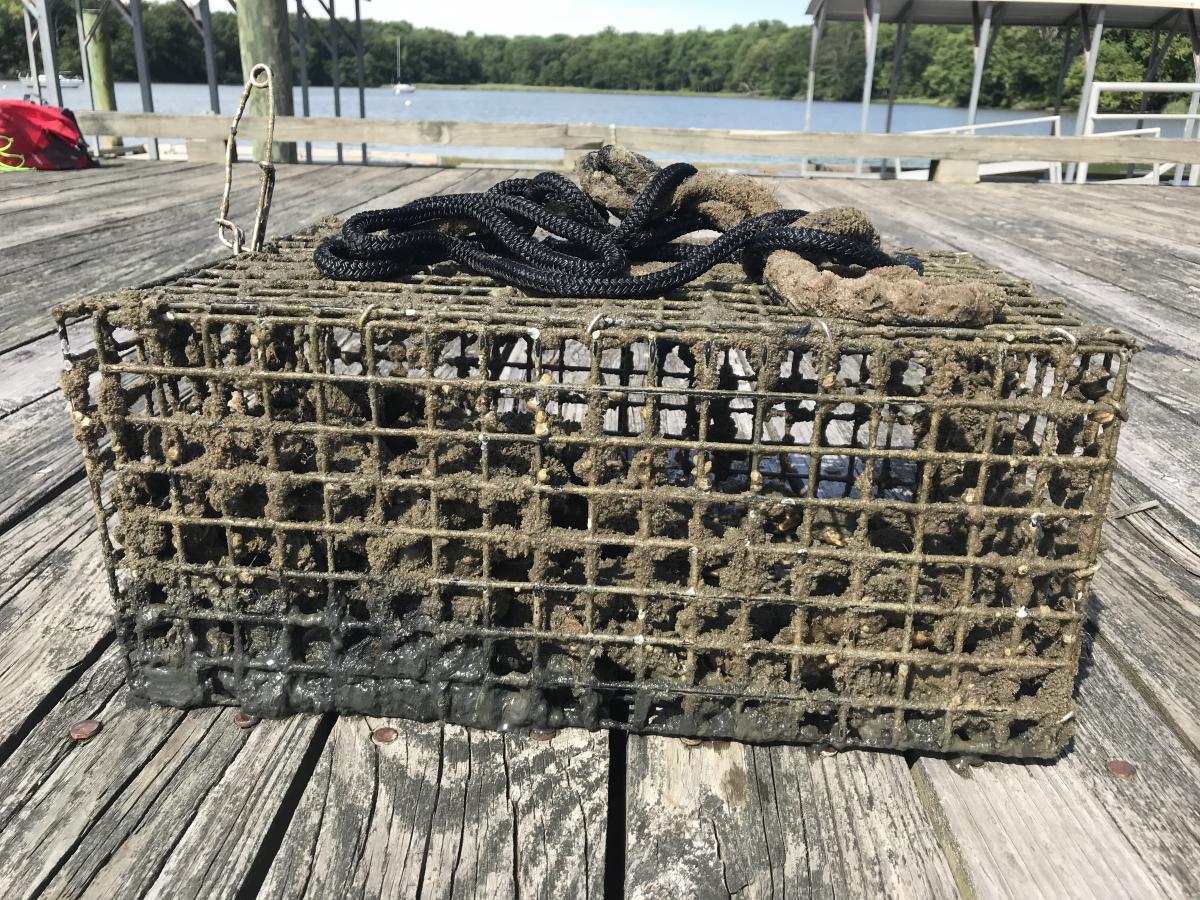Methods
Our goal is to adjust to the way the oysters are grown so that more survive each year. This year our experiment focuses on the initial amount of spat-on-shell in each cage. Does loading the cages with less spat-on-shell result in larger oysters because they have more room to grow? Will more spat survive to become oysters if there is a larger initial amount of spat-on-shell in the cages? You can help us answer these questions by volunteering for this experiment.

From the experiment, that we started this fall, we hope to identify the optimal amount of oyster shells per 40 oyster baskets. We counted and measured the spat, and the baskets are currently hanging from private docks throughout the Rhode River. Some of the baskets have the amount of oyster shells that the Riverkeeper has traditionally used, some have 50% more shells, and some have 50% fewer shells. In January 2019, we will recount and measure the (hopefully bigger) baby oysters. We will use our results to develop best practices for the Riverkeeper and their volunteers, so their time and resources are used most effectively.

